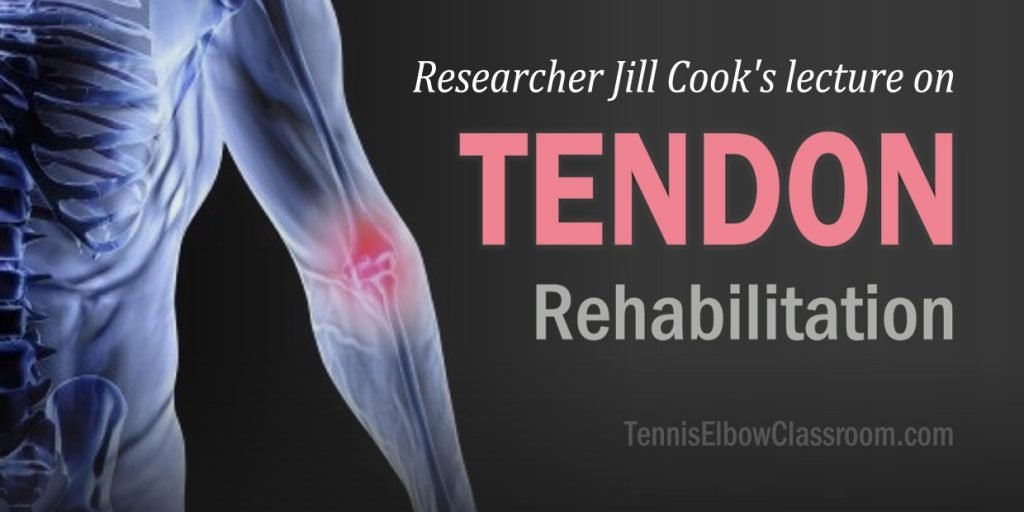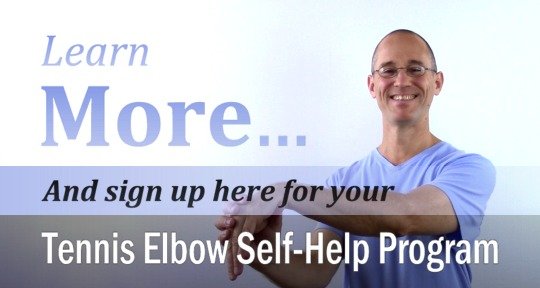
Tendinopathy / tendon healing and rehabilitation lecture
In this video, Professor and Researcher Jill Cook discusses the current thinking and model for Tendinopathy rehabilitation in Physiotherapy – particularly when it comes to the interests of athletes.
Video about: “Current Concepts in Tendinopathy Rehabilitation” Jill Cook, A Professor and Researcher at Latrobe U. in Melbourne, AU, discusses the current thinking around Tendinopathy rehab – on YouTube
Focus On Strengthening The Healthy Tendon – Not The Damaged Part!?
One of the key concepts revealed by Jill Cook, in this video lecture, is the idea that the damaged, degenerated, weakened areas in a tendon may remain that way indefinitely and not regenerate.
She claims, however, that the research suggests this is not the thing to focus on, because the remainder of the healthy tendon around the dysfunctional part can become strong enough to make up for that weakened, dysfunctional part!
She has a cute quip for this: “Treat the donut – Not the hole!”
(Something I think Homer could definitely get behind in a big way!)
Her focus, and that of her colleagues, is almost entirely directed at exercise as the path to rehabilitation, and she advised Physiotherapists / Physical Therapists [article on P.T. and Tennis Elbow] to do whatever they want, including icing, shockwave, ultrasound and so forth…
As long as they make a priority of rehab exercise!
I would never downplay or dismiss the importance of rehab exercise when it comes to the treatment of Tennis Elbow, Golfer’s Elbow and other Tendinopathies.
However, I still believe the best approach is to defer exercise until one has made progress with manual therapy.
That is, to work on the muscles and tendons by hand, using advanced self-massage techniques
…Releasing ahesions in the related muscles, directly stimulating the affected tendon(s) and overall increasing circulation…
BEFORE engaging in significant rehab exercise.
See my article about the Key Principles Of Rehab Exercise here
Another concept discussed has to do with compression forces on tendons, which doesn’t make complete sense to me.
In my understanding of the structural mechanics of the human body, it’s the bones (and the joints between them) that are largely called upon to handle compressive forces.
Muscles and tendons actively generate tensile forces and must also (actively and passively) handle tensile loads.
Muscles, being active players, are able to generate and respond to forces by contracting and relaxing…
And tendons, being passive players, that are able to store and release kinetic energy as springs.
Perhaps the compression component has to do with when a tendon is laterally “crushed” or squeezed by external forces.
And that could be much larger factor with the high-level pro athletes that Jill and her colleagues are working with.
(Athletes colliding with each other and getting impacted by sports equipment, and such.)
She also says something that makes no sense to me…
After making a case about the supposed value of ‘Isometric Exercise’ in the tendon rehab process – as well as in muscle strengthening, she claims that ‘Eccentric Exercise’ doesn’t result in stronger muscles.
Now, there is a debate about whether eccentric-only exercise is the best path to tendon rehab, and quite a bit of research has been done around this concept…
(See my article/video on ‘Eccentric Exercise’ specifically for Tennis Elbow, here, for more)
And it may or may not be conclusive, but it is certainly not true that Eccentric Exercise doesn’t strengthen muscles.
I don’t believe there is a stronger trigger for new muscle growth than when one exercises a muscle to failure – particularly failure on the eccentric aspect of the contraction.
(Unless there has been a major change in exercise physiology that I’m unaware of) – Anyone have any thoughts / insight on that? Please feel free to comment below, if you do!
Here’s where you can learn more about my comprehensive programs, if you’re interested:
And be sure to explore all the other free articles and videos I have here for you, as well as my free video course: Tennis Elbow 101
Learn To Treat And Heal Your Own Tennis Elbow Or Golfer’s Elbow At Home With This Video Program
You’ll get instant access to a complete VIDEO program designed by a professional therapist to help you take charge and break your vicious cycle of pain and frustration!…I’ll be your personal tutor guiding you through step-by-step video lessons, where you’ll get the therapy techniques, key stretches and essential exercises you need to treat and recover from your injury at home. (Without any special equipment.)
Tennis Elbow sufferers: Learn more about the program here
Golfer’s Elbow sufferers: Learn more about the program here








Leave a Reply